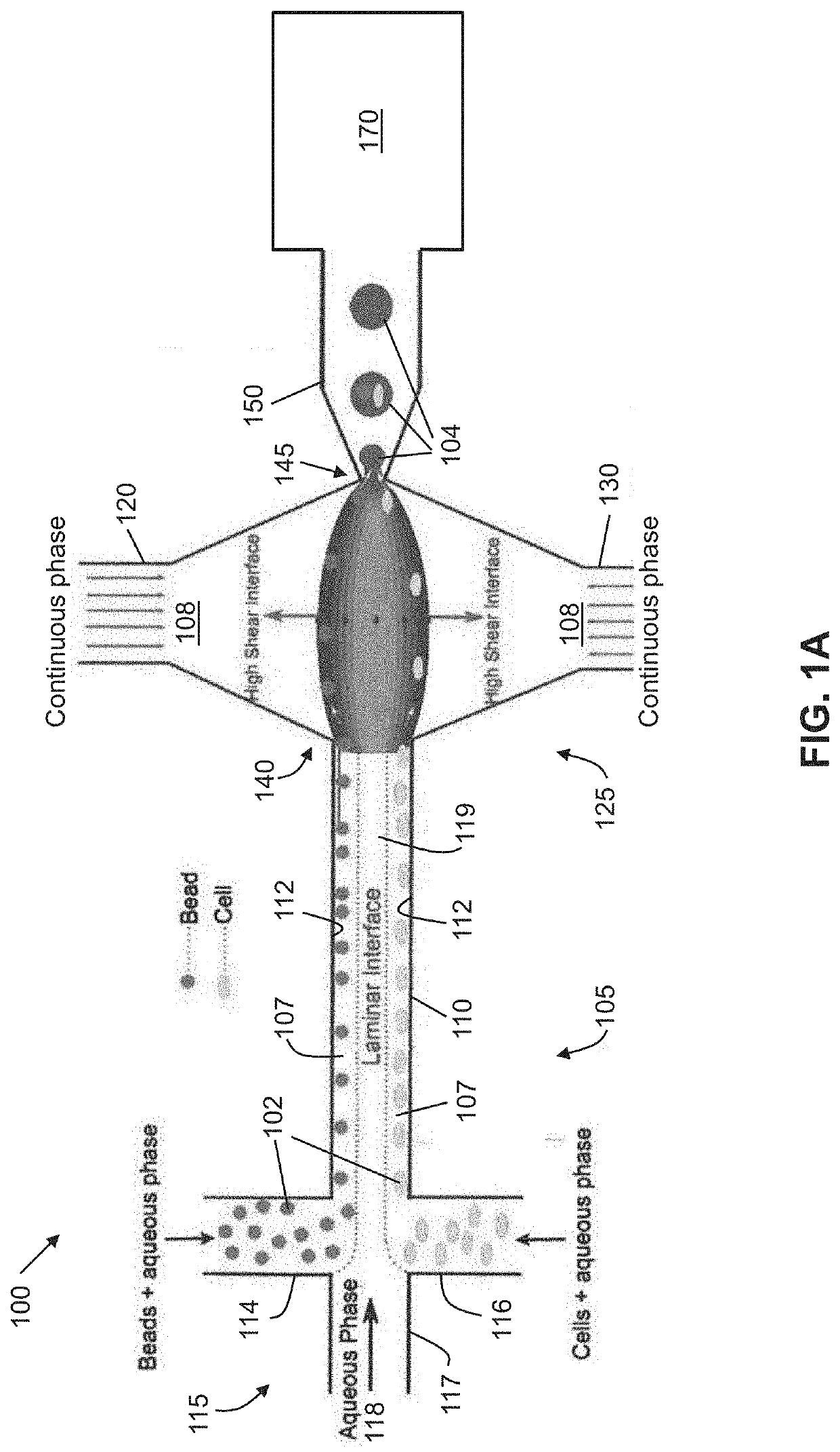High-efficiency particle encapsulation in droplets with particle spacing and downstream droplet sorting
a particle encapsulation and particle technology, applied in the field of microfluidic devices, can solve the problems of not as straightforward cell spacing, and achieve the effects of less material waste, high efficiency, and higher throughput experimentation
- Summary
- Abstract
- Description
- Claims
- Application Information
AI Technical Summary
Benefits of technology
Problems solved by technology
Method used
Image
Examples
examples
[0124]The following are non-limiting examples of encapsulation using the interfacial shearing technique of the present invention. It is to be understood that the examples are for illustrative purposes only and are not intended to limit the present invention in any way. Equivalents or substitutes are within the scope of the invention.
Materials and Methods
[0125]The microfluidic devices were fabricated in polydimethylsiloxane (PDMS) using soft lithography. The PDMS molded imprints and another plain PDMS layer were plasma treated and brought together to form a permanent seal. The device was left in an oven at 120 ° C. overnight to regain its natural hydrophobicity. Ethyl oleate and 2% ABIL EM 90 formed the continuous phase, and mixture of water, lipids (DSPC and DSPE-PEG 2000), glycerol and surfactant (Pluronic F-68) form the dispersed phase. Hela cells and 10 μm beads were suspended in freshly prepared dispersed phase.
[0126]Both the continuous phase and the dispersed phase were introdu...
PUM
| Property | Measurement | Unit |
|---|---|---|
| time | aaaaa | aaaaa |
| time | aaaaa | aaaaa |
| diameter | aaaaa | aaaaa |
Abstract
Description
Claims
Application Information
 Login to View More
Login to View More - R&D
- Intellectual Property
- Life Sciences
- Materials
- Tech Scout
- Unparalleled Data Quality
- Higher Quality Content
- 60% Fewer Hallucinations
Browse by: Latest US Patents, China's latest patents, Technical Efficacy Thesaurus, Application Domain, Technology Topic, Popular Technical Reports.
© 2025 PatSnap. All rights reserved.Legal|Privacy policy|Modern Slavery Act Transparency Statement|Sitemap|About US| Contact US: help@patsnap.com



